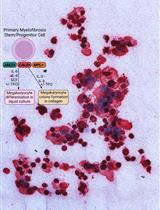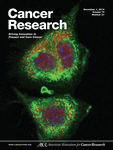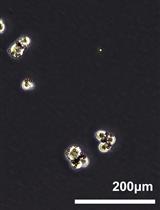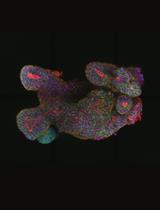- EN - English
- CN - 中文
Isolation and Flow-cytometric Analysis of Mouse Intestinal Crypt Cells
小鼠小肠隐窝细胞的分离和流式细胞术分析
发布: 2015年11月05日第5卷第21期 DOI: 10.21769/BioProtoc.1635 浏览次数: 16670
评审: HongLok LungKristina Y. AguileraAnonymous reviewer(s)

相关实验方案

来自骨髓增生性肿瘤患者的造血祖细胞的血小板生成素不依赖性巨核细胞分化
Chloe A. L. Thompson-Peach [...] Daniel Thomas
2023年01月20日 1941 阅读
Abstract
The intestinal epithelial layer forms tubular invaginations into the underlying connective tissue of the lamina propria. These structures, termed crypts, are the basic functional unit of the intestine. Colon crypts and the surrounding lamina propria house different cell types, including epithelial cells, stem cells, enterocytes, goblet cells, as well as cells of the innate and adaptive immune systems (Clevers, 2013; Mowat and Agace, 2014). Here we describe a technique for the isolation of mouse intestinal crypt cells as well as their characterization by flow cytometry analysis (FACS) (Del Reino et al., 2012).
Keywords: Flow cytometry (流式细胞术)Materials and Reagents
- Falcon 50 ml conical tubes (VWR International, catalog number: 21008-240 )
- Falcon 15 ml conical tubes (VWR International, catalog number: 21008-216 )
- 10 cm Petri dishes (Corning, Falcon®, catalog number: 353046 )
- Gauze, mesh size approximately 100 μm (Tegosa, catalog number: 10018 )
- Cell strainers (70 μm) (Corning, Falcon®, catalog number: 352350 )
- Cell strainers (40 μm) (Corning, Falcon®, catalog number: 352340 )
- 25G needle (Premier Healthcare & Hygiene, BD Microlance, catalog number: 300600 )
- 5 ml syringe (BD, catalog number: 309649)
- 5 ml round-bottom flow cytometry tube (BD Biosciences, catalog number: 352063 )
- 8- to 10-week old mice (Mus musculus) (male or female) (we used the C57BL/6 strain)
- Hank’s balanced salt solution medium (HBSS) (Life Technologies, Gibco®, catalog number: 2420-091 )
- Penicillin-Streptomycin Solution 100x (Biowest, catalog number: L0022 )
- Ethylenediaminetetraacetic acid (EDTA) (AppliChem GmbH, Panreac, catalog number: 13102/ 131026 )
- Fetal bovine serum (FBS) (Life Technologies, catalog number: GCS0103-500 )
- APC-conjugated anti-CD45 antibody (Beckman Coulter, catalog number: 732158 )
- FITC-conjugated anti-CD4 antibody (Beckman Coulter, catalog number: 731999 )
- PE-conjugated anti-Ly6G antibody (Beckman Coulter, catalog number: 732487 )
- Biotinylated anti-F480 antibody (eBioscience, catalog number: 13-4801 )
- PeyC7-conjugated anti-CD8 antibody (Biolegend, catalog number: 100721 )
- ECD-conjugated streptavidin (Beckman Coulter, catalog number: IM3326 )
- Dispase II (Life Technologies, catalog number: 17105-041 )
Note: Currently, it is “Thermo Fisher Scientific, GibcoTM, catalog number: 17105-041”. - Phosphate-buffered saline (PBS) (see Recipes)
- Disaggregation medium (see Recipes)
Equipment
- Dissection equipment (forceps & scissors)
- Scalpel or razor blade
- 37 °C chamber (Thermo Fisher Scientific, HeraeusTM)
- Refrigerated centrifuge (Thermo Fisher Scientific, HeraeusTM, model: MegafugeTM 2.012 )
- Neubauer chamber cell counter
- Orbital shaking platform (Kühner AG, Lab-Shaker)
- CO2 chamber
- Cytomics fc500 flow cytometer (Beckman Coulter)
- Microscope (ZEISS, model: Axiovert 40CFL )
Procedure
文章信息
版权信息
© 2015 The Authors; exclusive licensee Bio-protocol LLC.
如何引用
Alsina-Beauchamp, D., Reino, P. D. and Cuenda, A. (2015). Isolation and Flow-cytometric Analysis of Mouse Intestinal Crypt Cells. Bio-protocol 5(21): e1635. DOI: 10.21769/BioProtoc.1635.
分类
癌症生物学 > 癌症干细胞 > 细胞生物学试验 > 细胞分离和培养
干细胞 > 成体干细胞 > 肠道干细胞
您对这篇实验方法有问题吗?
在此处发布您的问题,我们将邀请本文作者来回答。同时,我们会将您的问题发布到Bio-protocol Exchange,以便寻求社区成员的帮助。
提问指南
+ 问题描述
写下详细的问题描述,包括所有有助于他人回答您问题的信息(例如实验过程、条件和相关图像等)。
Share
Bluesky
X
Copy link










